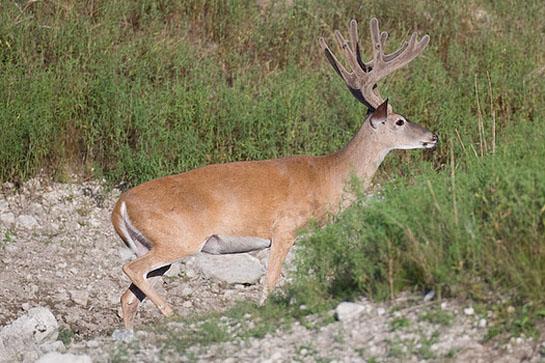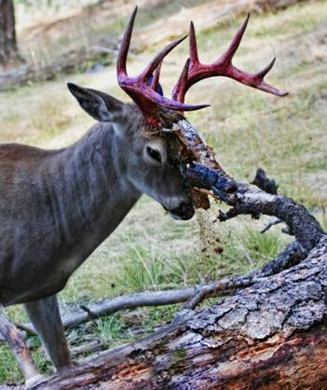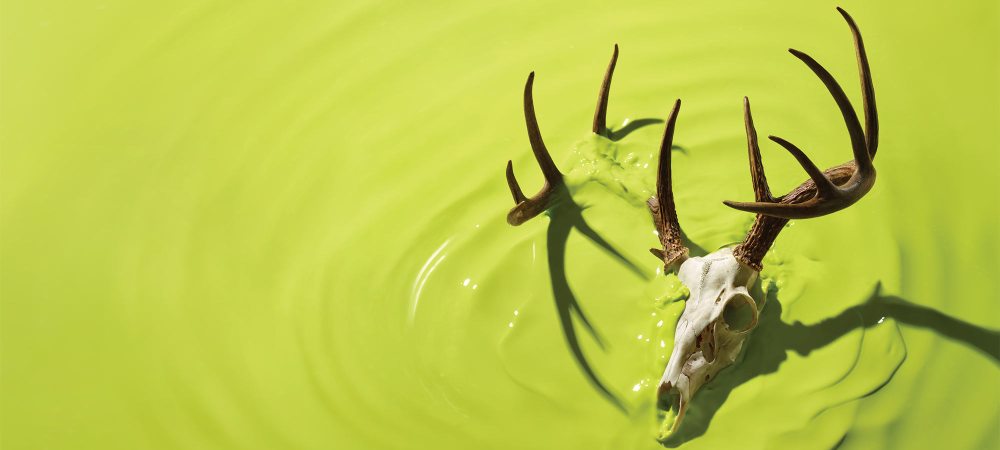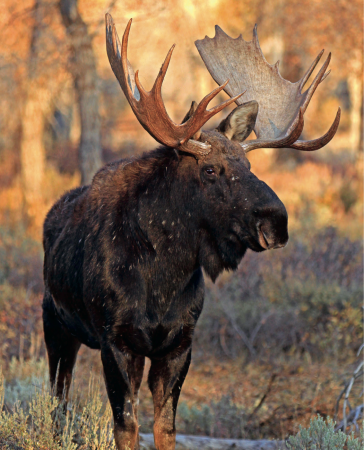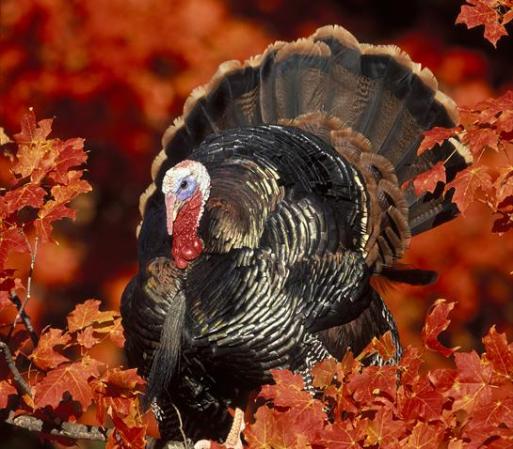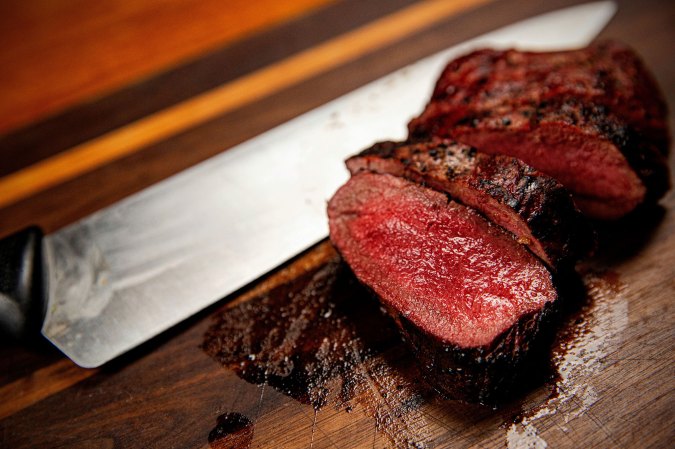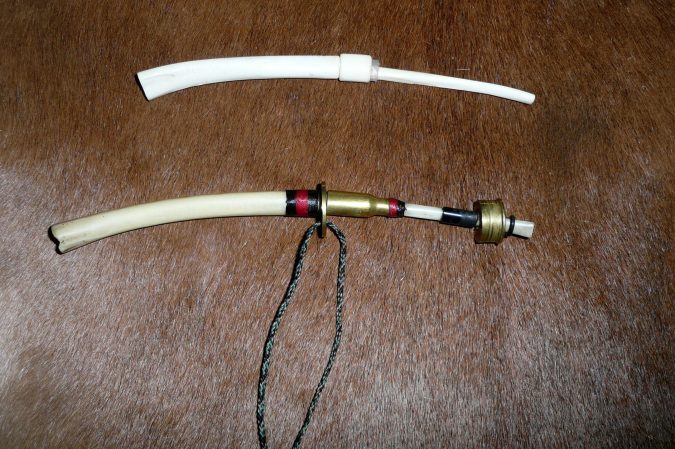10. Deer Hide
A thick deer hide provides warmth, and the raw material to make many different kinds of leather goods. From a “hair-on” hide that can be used for insulation to scraped rawhide that can be used for cordage and containers, hides are versatile. For general processing, stretch out the fresh hide by nailing it out flat to a barn or shed wall (flesh side outward), or piercing holes around the edge of the hide and tying it into a wooden frame with thin rope. Using a round bladed scraper or being careful with a knife, scrape off all meat, fat and connective tissue, leaving the flesh side of the hide whitish and clean. You’ll likely need to wet it with water several times to make it easier to scrape. Then allow the hide to dry and you’ve created “hair-on” rawhide. This can be used as a shelter door, rug, mattress pad or anything else that fits the qualities. You could also scrape the dried rawhide and simmer the shavings in water to create glue.
9. Hooves
The world’s oldest surviving bow is around 10,000 years old and hoof glue was used in its construction. This age-old formula is simple. Chop the hooves into small chunks and simmer them in water until they have virtually melted. The resulting liquid can be thickened by reducing the liquid further or adding extra ingredients. This water soluble glue can be used fresh, or dried for storage and reactivated with hot water. It has been used for carpentry, fabrics, and even as a pottery finish.
8. Bones
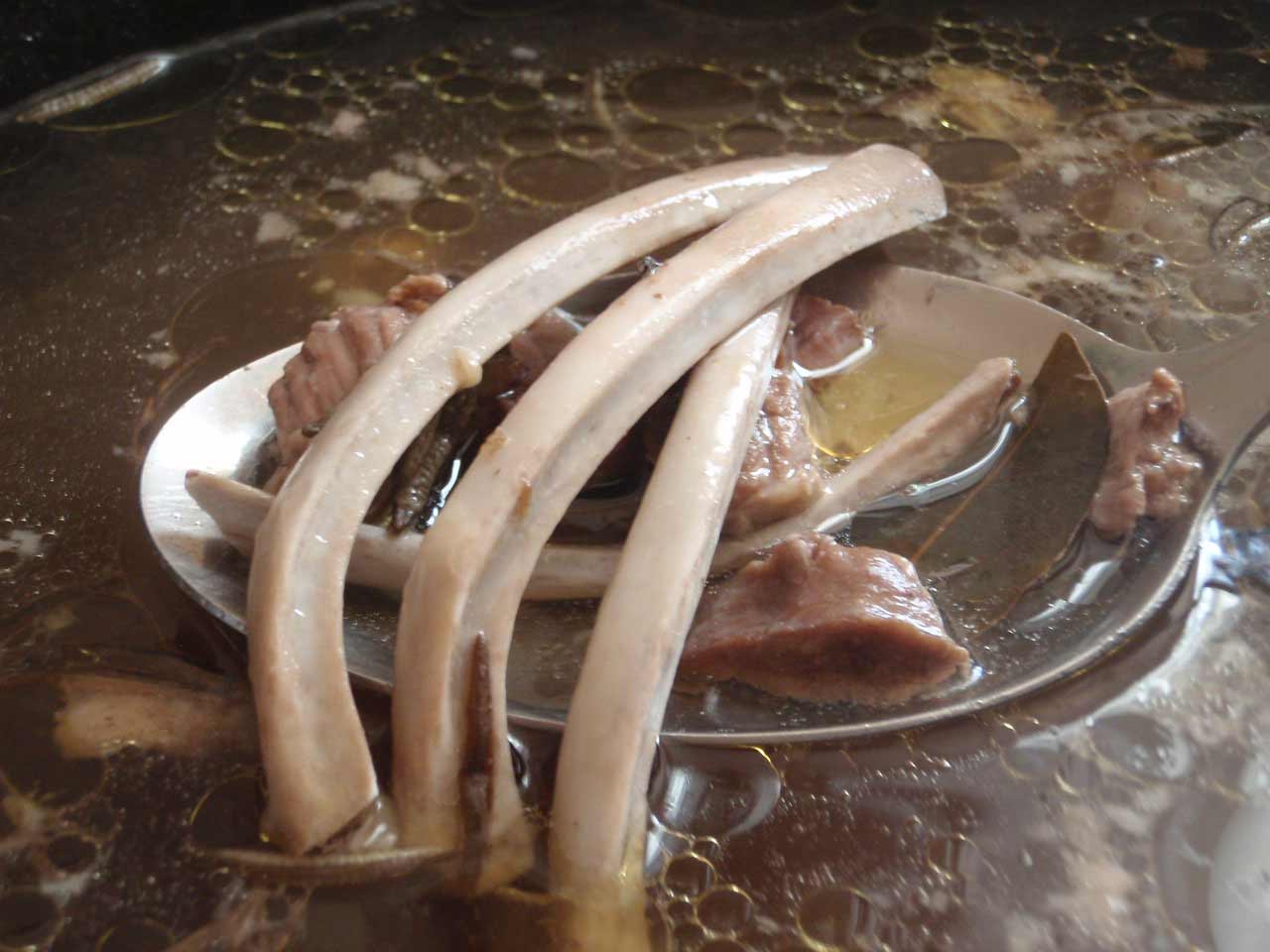
Commonly converted into tools by our predecessors, deer bones can still provide us with useful items in a modern wilderness emergency. Just let the wide range of shapes, sizes and structural qualities suggest the usage. Since leg bones are built to handle downward pressure, they can be turned into chisels, punches, needles, projectile points and other instruments that are strong “with the grain” of the bone. Other bones may be flexible, so something like a rib bone could become an excellent bow for a friction fire set. Even the scraps can be useful when you have leftovers from a project. Bone splinters can become needles or awls, triangular bone chips can become arrowheads and random chunks can become buttons or toggles. As a final option, fresh bones can be simmered in water for several hours to create a mineral-rich broth.
7. Organs
Many hunters save and eat the heart of their deer, as it’s comparable in flavor to the meat. The liver is another familiar edible organ, greatly improved by frying with bacon and onions But these aren’t the only organs you can use. The liver, heart, lungs, kidneys, eyes, tongue, stomach and intestines can also be cleaned, cooked and eaten. The brain is also technically edible and was a common companion of scrambled eggs. Today, you will want to skip the brain as a food due to the increase of deer diseases (primarily, chronic wasting disease). When this is even a possibility in your area, don’t eat the brain or spinal tissue. Don’t use the brain for hide tanning either. Egg yolks will work just the same when making “brain tan” buckskin, without the health risks. And any fresh organs you don’t want to eat will be excellent bait for bobcats and other meateaters.
6. Deer Fat
Few people I know relish the flavor of deer fat. It’s usually something trimmed away from the meat and fed to the dogs. A survival setting, however, changes everything. Ounce for ounce, that waxy deer fat will have twice the calories of the meat and it may be the most important thing you harvest from a deer. The fat can be added to soups, broth, stew or other foods to increase the calorie count. You can create rendered tallow by cooking it down slowly for a few hours and filtering the hot liquid fat through cloth to remove the solids. This fat will last for weeks or even months in cold weather, and it can be used as food, a conditioner for leather, a salve for skin or even a grease lamp fuel.
5. Antlers

The biggest chores for antlers in a primitive survival setting were their uses as stone tool production equipment. Pointy antler tines can be sawn or broken off to create pressure flaking tools to chip arrowheads, stone knives and a host of other lithic resources. Meaty antler stalks can be used as batons for percussion flaking on lager pieces of stone, both to make small, sharp blades and bigger, tougher tools (like stone axes). Large antler pieces can also become beautiful and durable knife handles. Even little antlers and cut-off scrap pieces have value in a long-term self-reliance scenarios. These can become buttons, toggles, small tool handles and much more.
4. Marrow
Deer legs are often overlooked by predatory animals and ignored by scavengers. This works in our favor, since nighttime kills often result in fresh leg bones lying around in the morning. It matters because we can use rocks to break into tough leg bones that most animals cannot break open by biting (not quickly, anyway). On average, the marrow from the four lower leg bones of a medium-sized deer will yield over 2,000 calories, mostly from high quality fat, nearly one person’s daily caloric needs. To get them open, crack the bones slightly with a small stone hammer until long fractures appear. Then give the bones a twist to create a spiral fracture, exposing most of the marrow with just one twist. Like all animal foods, this should be cooked for safety and avoided in areas where CWD is confirmed or suspected. When fried in a pan, a good deal of fat will render out of the marrow and this can be used to cook other food or create gravy-like sauces. However you eat it, marrow is too good to disregard.
Read Next: Survival Skills Order of Operations
3. Teeth
A deer jaw full of teeth can act as a surprisingly effective saw. It won’t cut wood very well, or harder materials, but fibrous vegetation is a good fit for this nature-made saw. When cutting grass to make a thatched roof or sleeping mat, just squeeze the grass into a tight bundle and saw its base with a toothy jaw bone. They are also handy for scaling fish.
2. Sinews

Strips of deer hide and even dried intestines can make surprisingly good string and rope, but when you need more strength, turn to dried sinews. The anatomical term sinew is a little vague, since it includes both tendons (the fibrous tissue that connects muscle to bone) and ligaments (the tissue that connects bone to bone).
The easiest sinews to collect are lower leg tendons and the “silverskin” on the backstraps. These strong white-grey tissues can be cut free, cleaned of meat, and dried for a few days. Once dry, they can be pounded with a hard, smooth object (like a hammer or round stone) to separate the fibers into something like dental floss. These fibers can be used as threads (great for fletching arrows). The loose threads can also be twisted into cords of any size. Sinews are very strong in dry weather (often compared to steel cable of the same diameter), though they will come undone in the water or after being rained on (so keep your sinew archery tackle dry).
1. Scraps

You’ve probably heard the old adage “waste not, want not”, right? This saying dates back to the 1700s or earlier, and reminds us that being frugal can keep us from being left empty handed. But can you really use every part of a deer? Depends on how resourceful you are. Doe urine can lure in another deer to shoot (a rutting buck). Deer excrement, urine and blood can be added to your garden for fertility. So can the hair, which is rich in phosphorus, something flowering plants and most vegetables need. How about the “mountain oysters” under a big buck? They’re not bad when sliced thin and fried with a cornmeal crust. Generally speaking, if it’s something you can’t bring yourself to eat, bury it in the garden for fertilizer or use it as bait to attract more quarry. There is a use for every part.




